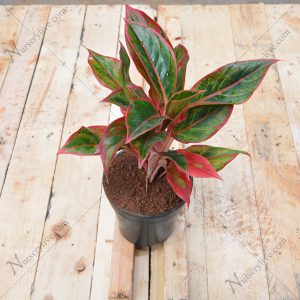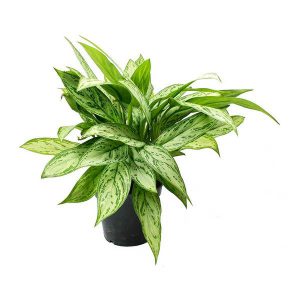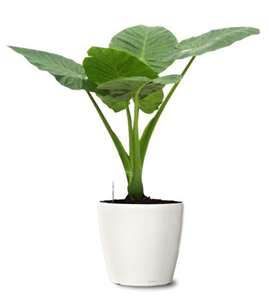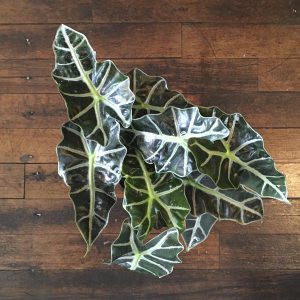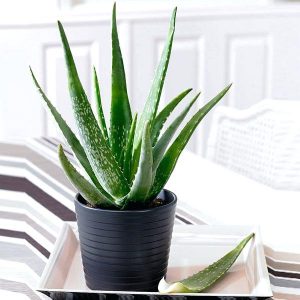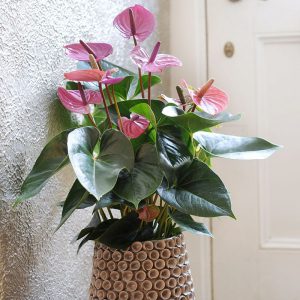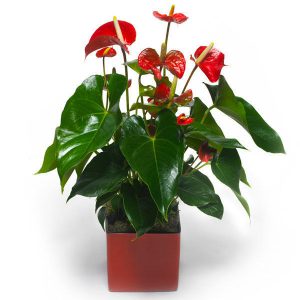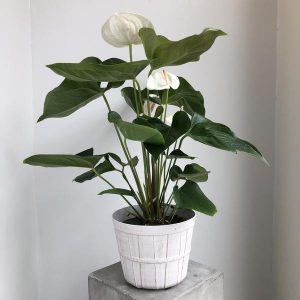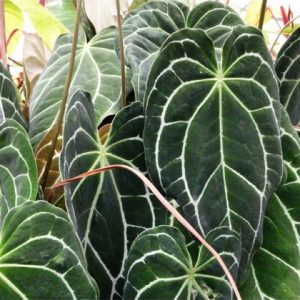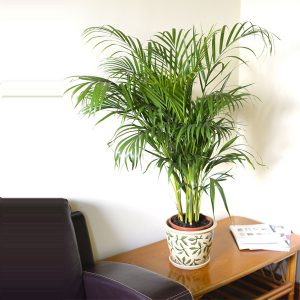Show multiple products in a category by slug. Go to: WooCommerce > Products > Categories to find the slug column.
Agave blue glow
Agave is not a difficult plant to grow. They’re slow-growing and dramatic and will even thrive on a bit of neglect. If you’re the type of person who likes to fuss with houseplants and water a lot, Agave is probably not the plant for you. If, however, you’re the type of person who likes to set it and forget it, and you have a sunny window, Agave might the way to go. Be aware that some of the large varieties will eventually outgrow your room (unless you have a large greenhouse), and Agave can be aggressive. They have irritating sap and sometimes very sharp thorns that can cause injuries to small children and even pets.
In general, Agave do not need to be repotted every year. Most of the species commonly found in cultivation grow very slowly and will take a long time to outgrow their pot. It’s also best to handle your Agave as little as possible, since they do not like to be disturbed. When you do repot, refresh the spent soil with new potting mix and make sure the plant is firmly anchored in its pot
AED 0.00Read more
Aglaonema red
Light: The darker green varieties of aglaonema can grow in near shade, while the variegated varieties require brighter light. Do not expose any aglaonema to Direct Sun
Water: Water thoroughly in the summer and mist the plant often to raise the humidity. During the winter, reduce watering but do not let the plant dry out completely.
Temperature: These plants do not like cold drafts or temperatures below 65 F. Be sure to keep them away from drafty windows or vents and the warmer the spot you can find for them, the better.
AED 55.00Add to cart
Aglaonema silver queen
WATERING Aglaonema Silver Queen – If you place your Aglaonema Silver Queen in high light, you can allow the potting mix to dry down approximately 1/2 to 3/4 of the way before watering thoroughly. In a lower light situation, allow soil to dry between waterings.
TEMPERATURES for Aglaonema Silver Queen should be at a minimum of 60°F. It is easily damaged by cold drafts and temperatures. Be sure to keep away from cold spots and drafts and move away from cold window panes in the winter time.
PLACE Aglaonema Silver Queen in any shaded location. Full sun, especially through glass, will most likely burn the exposed leaves. This plant will survive in low light For a really nice looking plant, try to provide
AED 55.00Add to cart
Alocasia california
Alocasia california. Alocasia. An Alocasia plant, native to Asia, is also called an Elephant Ear plant or African Mask plant because of their very large, glossy, heart-shaped leaves with wavy edges. These stunning, veined leaves come in red, bronze, blue-green, and purple.
AED 370.00Add to cart
Alocasia Polly Elephant Ear Plant
An Alocasia plant requires very bright indirect light but no direct sun.
Allow the top 2″- 3″ of soil to dry out before watering, and try to keep the soil evenly moist. Over-watering, wet leaves, and soggy soil makes an Alocasia plant susceptible to a variety of serious fungal infections. Check the soil frequently until you are sure of the plant’s watering needs. Alocasia plants require less water during the winter when it’s dormant.
Alocasia plants prefer warm temperatures between 60°-80.° These plants becomes dormant with prolonged exposure to temperatures below 60° and may drop all of their leaves. Be sure to keep an Alocasia plant away from air conditioners and cold drafts. During warm summer months, an Alocasia can produce a new leaf every week and each new leaf may be twice the size of the previous leaf.
AED 70.00Add to cart
Aloe vera Barbadensis Mille
As much as the Aloe Vera is used to hot and dry fields and often does not require water for a period of several months, regular watering is recommended. In dry periods, the Aloe Vera draws its moisture from the fleshy leaves. However, this inhibits its healthy and splendid growth. To prevent this, this Aloe species should always have a moist root ball during spring to late summer. You can test with your thumb, whether the plant needs water. If the surface can be pressed down a little bit, the soil is still moist inside. If the surface does not drop at least two to three centimeters under your thumb pressure, it should be watered
AED 45.00Add to cart
Anthurium Pink
Anthurium is a popular guest and not just in your home. The plant is loved by its shiny green leaves are colored bracts and cheerful flask. Thus you give your interior an instant red, pink, purple, orange, yellow, white or green boost. Try Just try not to be cheerful
AED 65.00Add to cart
Anthurium Red
Anthurium is a popular guest and not just in your home. The plant is loved by its shiny green leaves are colored bracts and cheerful flask. Thus you give your interior an instant red, pink, purple, orange, yellow, white or green boost. Try Just try not to be cheerful
AED 65.00Add to cart
Anthurium White
Anthurium is a popular guest and not just in your home. The plant is loved by its shiny green leaves are colored bracts and cheerful flask. Thus you give your interior an instant red, pink, purple, orange, yellow, white or green boost. Try Just try not to be cheerful
AED 65.00Add to cart
Anthurium-Crysatallinum
To thrive in our homes, anthuriums need medium to bright indirect light, although they’ll accept less during their dormant period in winter. They are sensitive to direct light and burn easily, so take care to protect from hot afternoon sunbeams.
Proper watering is key to Anthurium care (and to the care of all your houseplants!). Keep the soil lightly moist during the growing season (March-September), letting the top layer just approach dryness between waterings. Make a habit of checking on it at least once or twice a week by gently digging a finger into the soil. It should feel barely moist. If it still feels wet, wait a bit longer.
Proper Anthurium care means keeping a watchful eye in winter and protecting your plants from drafty doors and windows. They will suffer or even die below 55 degrees and are happiest between 65-70. It’s also important to protect your Anthurium from forced air. Heaters, fans, and air conditioners can damage plants if they are too close, but gentle air circulation (such as an open window on a warm, humid day) will benefit them.
AED 90.00Read more
Arecca palm
Areca palm (Chrysalidocarpus lutescens) is one of the most widely used palms for bright interiors. It features feathery, arching fronds, each with up to 100 leaflets. These big, bold plants command attention.
1. During the spring and summer the soil must be kept moist. In fall and winter, however, the soil should get a bit dry between watering.
2. The sunlight should be either bright indirect or curtain filtered.
3. Temperature fluctuations may be dangerous. In the winter months try to keep temperatures from 60-70 F at night and the day temperatures should be from 75-85 F.
4. From spring to fall use a fertilizer to give the soil all the necessary nutrients for a year.
AED 35.00Add to cart
asparagus fern
Asparagus aethiopicus, Sprenger’s asparagus, is a plant native to the Cape Provinces and the Northern Provinces of South Africa. Often used as an ornamental plant, it is considered an invasive weed in many locations
AED 40.00Add to cart


